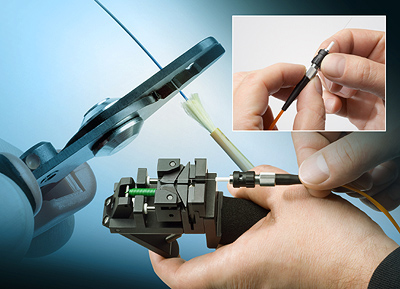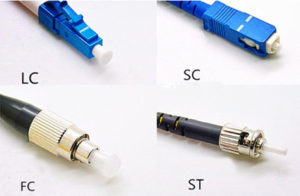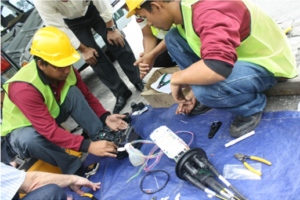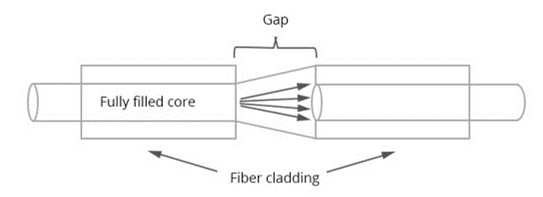When it comes to install a fiber optic network, undoubtedly, fiber optic termination is one of the extremely important procedures. Since an unreliable network will cause many problems and may not perform correctly. Therefore, much attention is paid to this area today, and numerous related products are appearing on the market to make fiber optic termination easier and more accurate than before.
Fiber optic termination is the connection of fiber or wire to a device such as a wall outlet or equipment, which allows for connecting the cable to other cables or devices. It is an essential step for installing a fiber optic network. Since any mistakes can lead to the system functioning unreliably, this step must be operated correctly.

Generally, there are two methods of fiber optic termination. One is to use connectors to create a temporary joint or to connect the fiber to a piece of network gear. Another is to create a permanent joint between two fibers with splicing. Here is a brief overview of this two methods.
Fiber optic connectors are unique. They transmit pulses of light rather than electric signals, so the terminations must be more precise. Instead of merely making metal to metal contact, fiber optic connectors must align precisely so that signals can run through successfully. Although there are various types of connectors on the market, they share the same structures. And there are three major components of a fiber optic connector: the ferrule, the connector body and the coupling mechanism.
- Ferrule—This is a thin structure (often cylindrical) that holds the glass fiber. It has a hollowed-out center that forms a tight grip on the fiber. Ferrules are usually made from ceramic, metal, or high-quality plastic, and typically will hold one strand of fiber.
- Connector body—this is a plastic or metal structure that holds the ferrule and attaches to the jacket and strengthens members of the fiber cable itself.
- Coupling mechanism—this is a part of the connector body that holds the connector in place when it gets attached to another device (a switch, NIC, bulkhead coupler, etc.). It may be a latch clip, a bayonet-style nut, or similar device.
There are various types of connectors available on the market such as SC, LC, FC, MPO, MTRJ, etc. When install a network, problems about the connector type should be considered. For example, whether the connector is compatible with this systems planned to utilize the fiber optic cable plant and whether the connector is accepted by the customers.

Fiber optic splicing is needed when the cable runs are too long or a numbers of different types of cables are needed to be mixed. As mentioned above, splicing is to connect two fibers permanently. Splicing also has two types. One is mechanical splicing and another is fusion splicing. Fusion splicing is most widely used as it provides the lowest loss and least reflectance as well as the most reliable joint. While mechanical splicing is like connectors which only combine fibers temporarily.
How to choose splicing types depends on the installation locations or cost. Most splicing is on long haul outside plant single-mode cables, not multimode LANs (Local Area Networks). So if you do outside plant single-mode jobs, you will want to learn how to do fusion splice.

We have known the methods of fiber optic termination, and what we should make sense is that, no matter which methods we adopt, the loss is unavoidable. And now I’d like to talk about the loss mechanisms caused by connectors and splicing.
Connector and splice loss is caused by a number of factors. As we all known, when the two fiber cores are identical and perfectly aligned, the loss is minimized. And only the light that is coupled into the receiving fiber’s core will be transmitted. The rest of the light becomes the loss. Here are some common causes that appear in fiber optic termination, which can result in loss.
End gaps can result in two problems—insertion loss and reflectance. When light runs in the end gaps, it will become cone shape and spill over the core of the receiving fiber and be lost. Besides, the air gap in the joint also causes a reflection. Because when the light runs from the glass fiber to the air in the gap, the different refractive index can lead to loss.

Different core diameters connected together also can cause light loss. And the loss amount is determined by the transmission direction. When light transmits from a fiber with a larger core diameter to a small one, the loss will be higher than the reverse. So when terminating two fibers, it’s important to make the core diameter of them identical.

Improper fiber ends can cause loss, too. Therefore, the end finish of the fiber must be properly polished to cut loss. A round surface will scatter light, and dirt also can scatter light. Since the fiber is so small that a little dirt can be a major source of loss. Whenever connectors are not used, they should be covered to keep the ferrule from dirt.
In summary, this article introduces some basic information about fiber optic terminations. And the fiber optic termination process has become much simpler today with readily available termination products. Fiberstore provides all kinds of fiber optic connectors and splicing equipment for you to make your fiber optic terminations easier and more convenient.
